Get those tousled, beachy waves, or the texture that you get in your hair after a day at the beach, without the damage, using this DIY sea salt spray. It’s customizable to suit your hair type and the ingredients you have on hand.
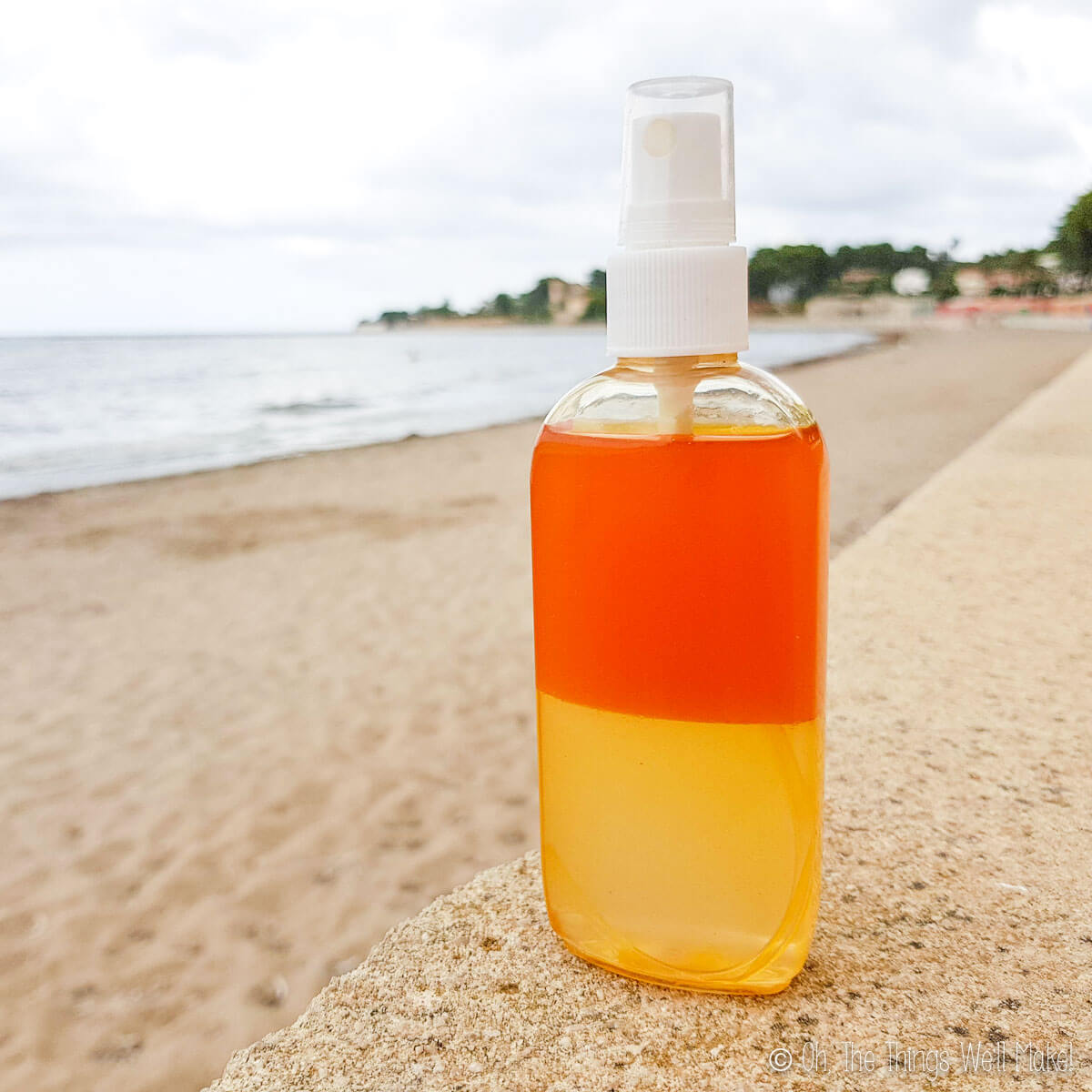
Have you ever noticed that after a day at the beach along the sea or ocean, your hair has a lot more texture? That’s because the salt from the water helps gives your hair a light hold and texture.
You can easily recreate that look year-round with a sea salt spray.
What is a sea salt spray?
Sea salt sprays are a type of light-hold hairspray that helps replicate the look of your hair after a day at the beach. If you love having beachy waves, a sea salt spray is a good way to achieve them. It can also help give texture to thinner hair that is normally flat.
What hair types benefit most?
Sea salt sprays work particularly well on straight and wavy hair. They add texture to straight hair and can help define waves and light curls for those who have them.
Is sea salt good for your hair?
Sea salt, while it does make some great beachy waves, can also be drying for your hair. To prevent damaging your hair when using a homemade sea salt spray, you should combine the salt with other ingredients that help nourish your hair and protect it.
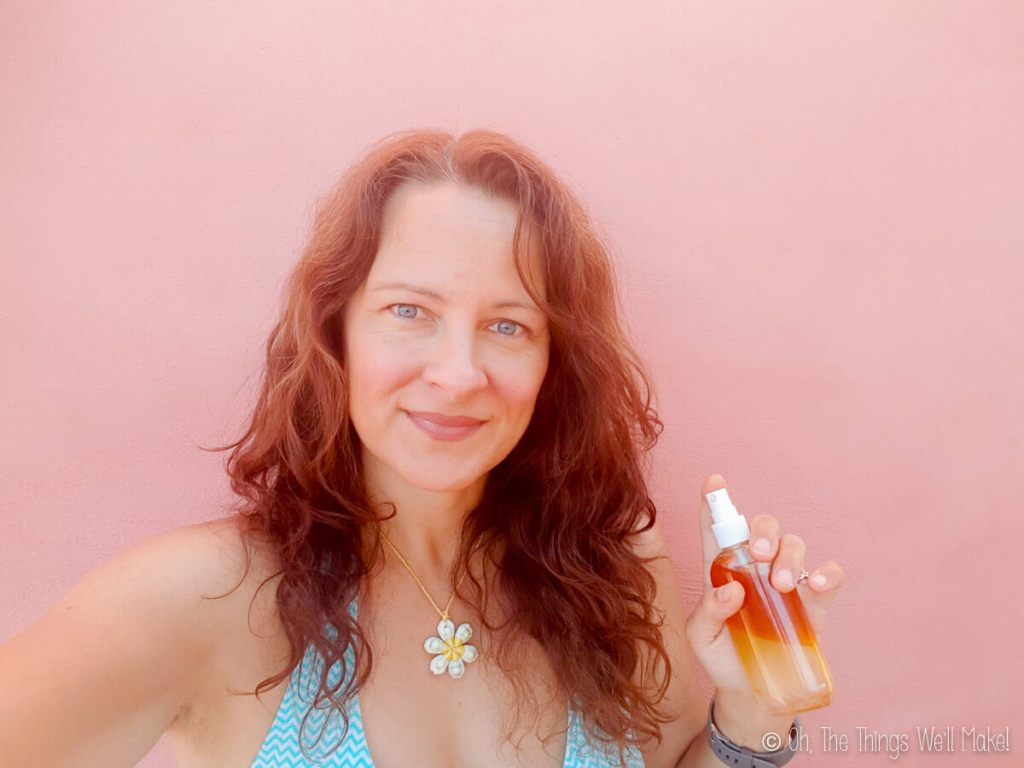
Ingredients
In this sea salt spray, I’ve combined sea salt with Epsom salts. Epsom salts, or magnesium sulfate, don’t give the same sort of hold, but they do help soothe both the hair and scalp.
I’ve also made this into a bi-phase product with oils that are nourishing to your hair. The oils will both protect your hair from the drying effects of the salt, but they also add a bit of anti-frizzing and a touch of shine.
The water phase
The water phase is made up of water-soluble ingredients. Because water weighs more than the oils, this phase will be the lower phase of your salt spray.
Water and/or hydrosols
My salt spray recipe uses a combination of distilled water and aloe juice for the water portion of the spray.
You could use just plain distilled water, or you can fancy things up with floral water or a hydrosol. You could even do some sort of herbal infusion to give the water a hint of color, scent, and/or beneficial properties. I choose distilled water over tap water for all of my homemade products to ensure I’m not starting with impurities or microbes that could react with my other ingredients.
You’ll notice that I also added some aloe juice to the water portion of my spray. Aloe also helps soothe skin and protect the hair. I suggest combining aloe juice with other liquids. Aloe juice is notoriously difficult to preserve, so keeping the amount used low helps ensure you are making a product that will keep well.
Salts
This salt spray uses a combination of sea salt and Epsom salts. You can substitute the sea salt with some other “regular” salt (aka. sodium chloride) like pink Himalayan salt. Or use another fun salt that can add a touch of color to the water portion of your salt spray. Make sure you are using some sort of sodium chloride, though, because that is the active ingredient in this product.
I combined the sea salt with magnesium sulfate, aka. Epsom salts, because they have a soothing effect on the hair and scalp.
Glycerin and/or glycerite extracts
Glycerin is a humectant, meaning that it helps draw moisture into your hair. You can use regular glycerin or use some sort of glycerite. Many of the herbal extracts that are sold online are made using glycerin as the extraction liquid. If you don’t have either, it is perfectly fine to substitute the glycerin for more water.
Vitamins and other additives
I used d-panthenol at 2% of the recipe. D-panthenol is also known as provitamin B5, and it’s great for adding to almost any hair or skin product. I add it to almost everything. For hair products, it can help hydrate your hair and smooth over the hair strand to give your hair a healthy sheen. Many other vitamins can be added to hair and skin products. If you don’t have any on hand, you can substitute it with more water.
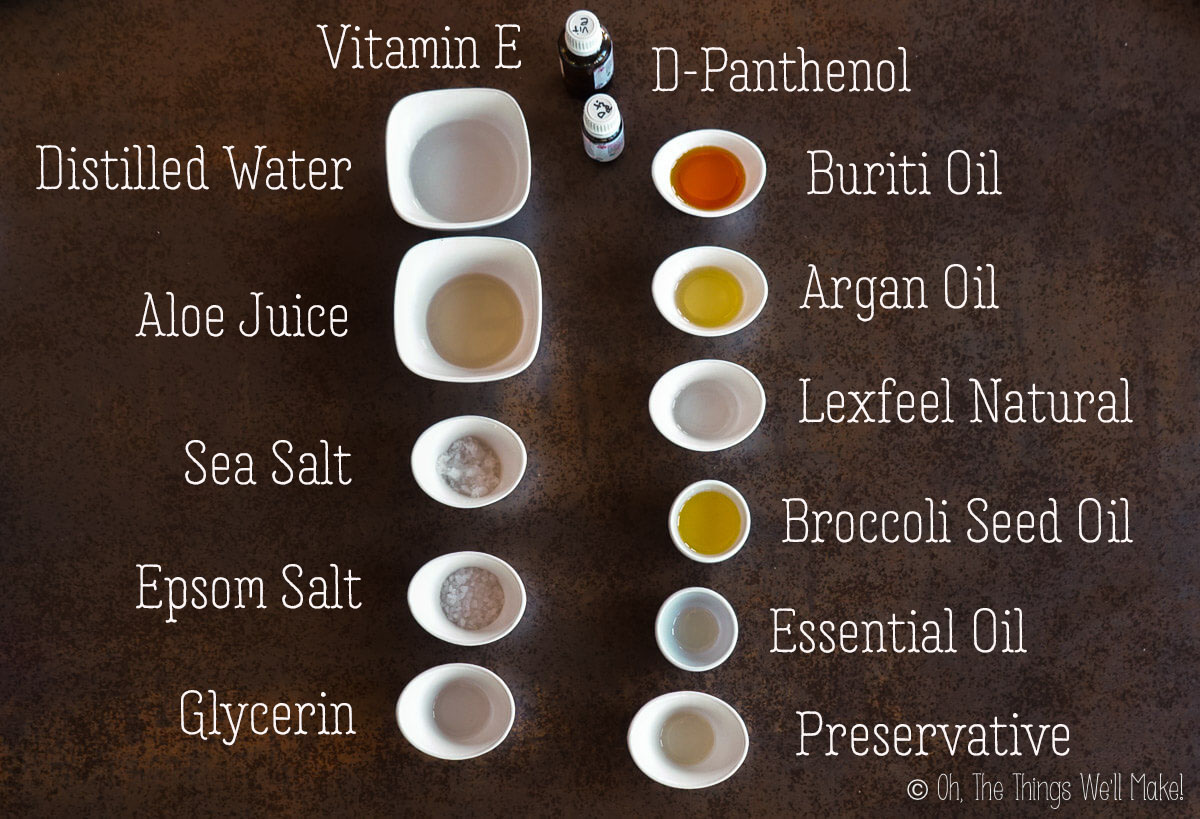
The oil phase
Carrier oils
Here is where you can have a bit of fun and switch things up to suit your needs. I chose to use both argan oil and buriti oil in my DIY sea salt spray because they are both great, nourishing oils for hair.
What’s really cool about buriti oil is it’s a beautiful color. Notice the lovely orange color of the oil phase in my spray? It comes from the natural coloring of the buriti oil. (If you don’t have buriti oil, but want an orange color, you could try macerating some carrot into a light colored oil of your choice in the same way that I made my own aloe oil.)
Argan oil is another great oil for hair. That’s why I usually use it in my homemade hair conditioner.
That said, both oils can be on the pricier side. If you don’t want to use those oils, feel free to substitute them with another oil or two. Many people love using coconut oil in their hair and it’s a much cheaper oil.
Natural silicone alternatives
Of course, this is totally optional, but using natural silicone substitutes can help make a more professional, higher-end hair product. Once you buy them, you can use them in all of your homemade shampoos and homemade conditioners.
Silicone alternatives will give your hair luster without making it feel greasy and will help protect your hair and keep the frizz down. For my salt spray, I used a combination of two different silicone alternatives so that you could get an idea about what is available.
Broccoli seed oil is a wonderful oil for hair and serves as a silicone replacement. Its antioxidants also help protect your hair from free radicals. If you don’t use it, replace it with either more oil or a mixture of oil and water.
Lexfeel Natural is a silicone alternative that can reduce the feeling of greasiness when combined with other oils. It’s a vegetable-based emollient derived from castor oil and can be used in many types of products, but I especially love it for hair care.
If you don’t use something like Lexfeel Natural, you may want to lower the oil to water ratio of the product so it doesn’t leave your hair feeling greasy. (So, maybe replace half of it with oil and half of it with water.)
Antioxidants
Antioxidants can be added to the oil phase to help extend the life of the oils and keep them from going rancid. I used tocopherol, aka. vitamin E, at around 0.5% of the recipe. You could also consider using rosemary CO2 extract or just leaving antioxidants out and substituting them with more oil.
Essential oils
The main reason to add essential oils is to give your hairspray a beautiful fragrance. Some essential oils will also have the added benefit of nourishing your hair in some way or another.
In my salt spray, I chose to use a combination of citrus essential oils because I thought the scent would complement the bright orange color of the oil phase, and also think that citrus scents remind me of warm weather and summer. (I used a combination of orange oil, lemon oil, and bergamot.)
Keep in mind, though, that many citrus oils can cause photosensitivity, so, if using these oils, try to keep them off of your skin if you will be out in the sun! (Or use other oils instead.)
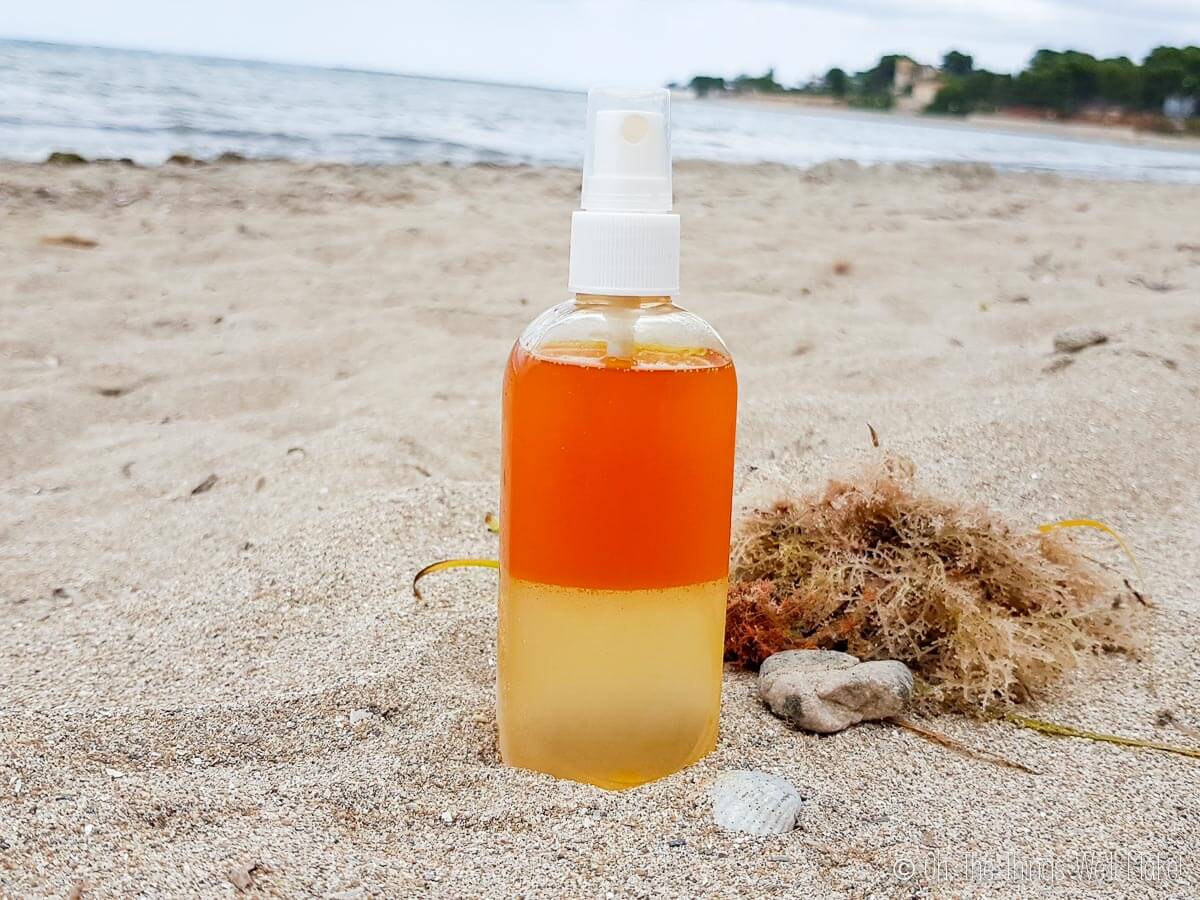
Does this need a preservative?
Because this product uses water, you should use a broad-spectrum preservative to keep bacteria and mold from forming. While the salt will likely keep things microbe-free for a while, this is the best protection to keep your product safe.
When using natural preservatives, you want to make sure your product falls within the pH range that is acceptable for whatever preservative you choose. Also, keep in mind that your hair favors a more acidic pH. Somewhere between a pH of 4.5 and 5.5 is a good range to set as a goal.
I used Sharomix 705, it’s a natural preservative (ECOCERT approved) on the acidic side. After using it, my spray fell into a range between a pH of 4 and 5. I was happy with that, so I didn’t try to alter the pH of my spray in any way. If you are changing up the ingredients used in your sea salt spray, that could change the pH of your product, so it’s always a good idea to test the pH if you can to make sure it falls into the range for your particular preservative.
For more information about preservatives, check out my beginner’s guide to natural preservatives.
Customizing this DIY sea salt spray
You will notice that I used a lot of ingredients to make a higher-end, professional-grade sea salt spray.
While I normally like to simplify recipes for the blog, this time I included my full recipe because I want you to see the sorts of ingredients that you can easily add to improve your final product. That said, if you only have a few ingredients on hand, you can make a very simplified version of this spray and it will still be effective. (See my notes about the ingredients above to help simplify the recipe.)
The oil to water ratio
I used around 60% water and water-soluble ingredients to around 40% oil-based ones. You could make a very simplified version of my spray by having the salts and water add up to somewhere between 50-60% of the recipe by weight. Finish off the product with 40-50% of an oil or a combination of oils.
Feel free to play with the ratio of oil to water. I think it’s a good idea to experiment with different ratios depending on your hair type.
If your hair is already on the oily side, you may want to lower the ratio of oil to water. If your hair is on the dry side, I’d shoot towards 50-50%. Keep in mind that if you add very little oil, the top layer won’t look very even in comparison with the water phase of your product when you are looking at the bottle. (That may, or may not, be of concern to you.)
Procedure
Making this spray couldn’t be much easier. Once you’ve weighed out the ingredients, you just need to combine them.
For best results, combine the salts and water-soluble ingredients first. If you are having a hard time dissolving the salts in the water, you can heat the mixture and stir until they have dissolved.
Next, combine all of the oils and oil-soluble ingredients.
Once each of the phases is ready, you can combine them and store them in a spray bottle. Give the bottle a good shake to mix up the ingredients. You’ll see that the spray will separate quite quickly into its two phases. That’s perfectly normal!
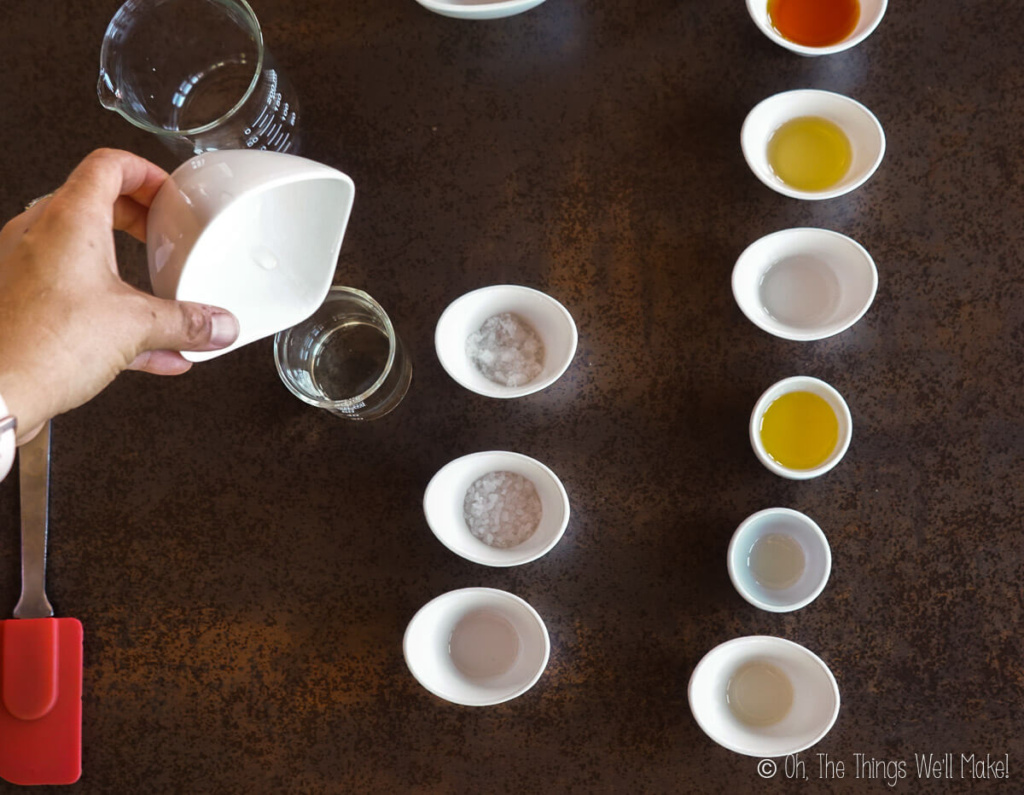
Mix together the water-phase ingredients. 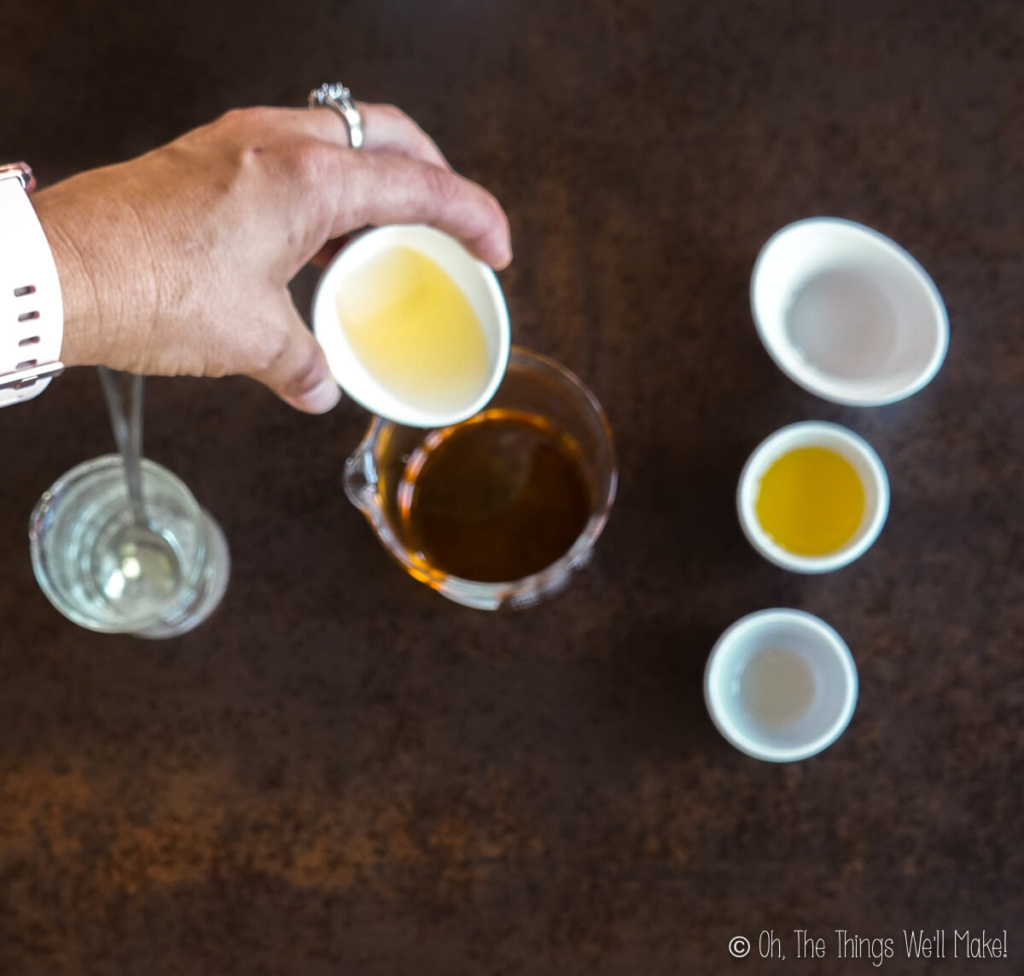
Mix together the oil-phase ingredients. 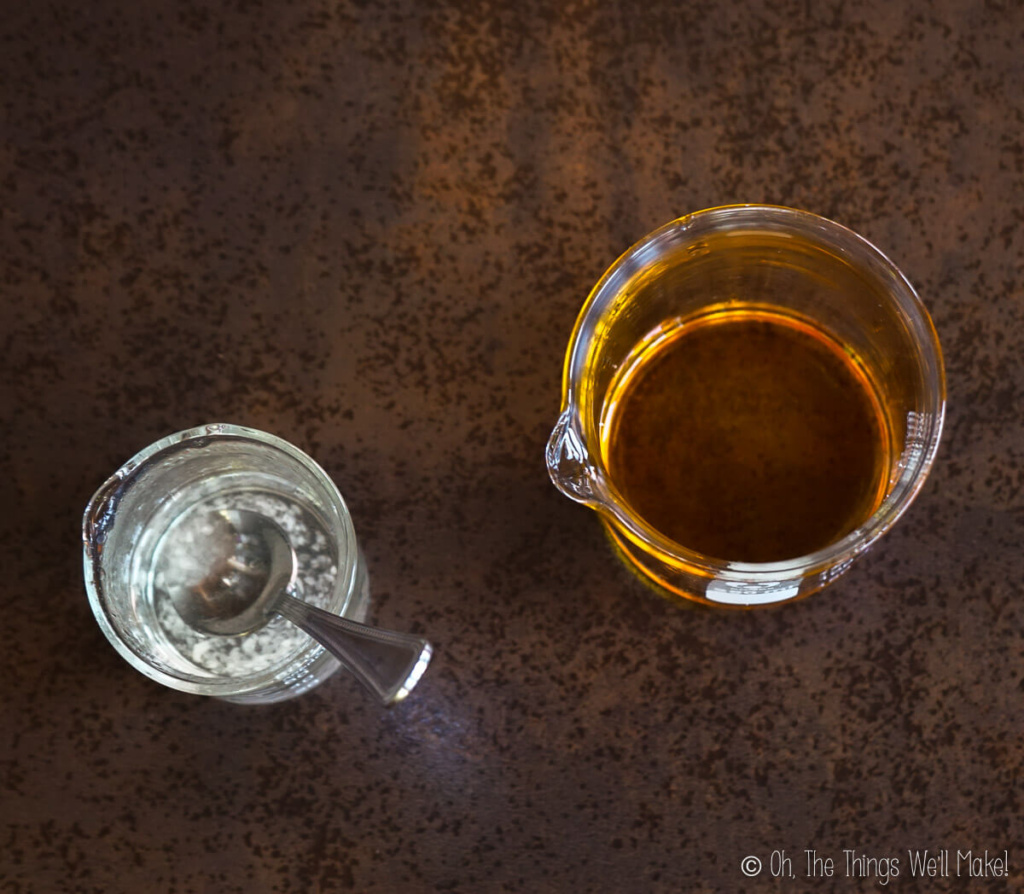
Dissolve the salt. 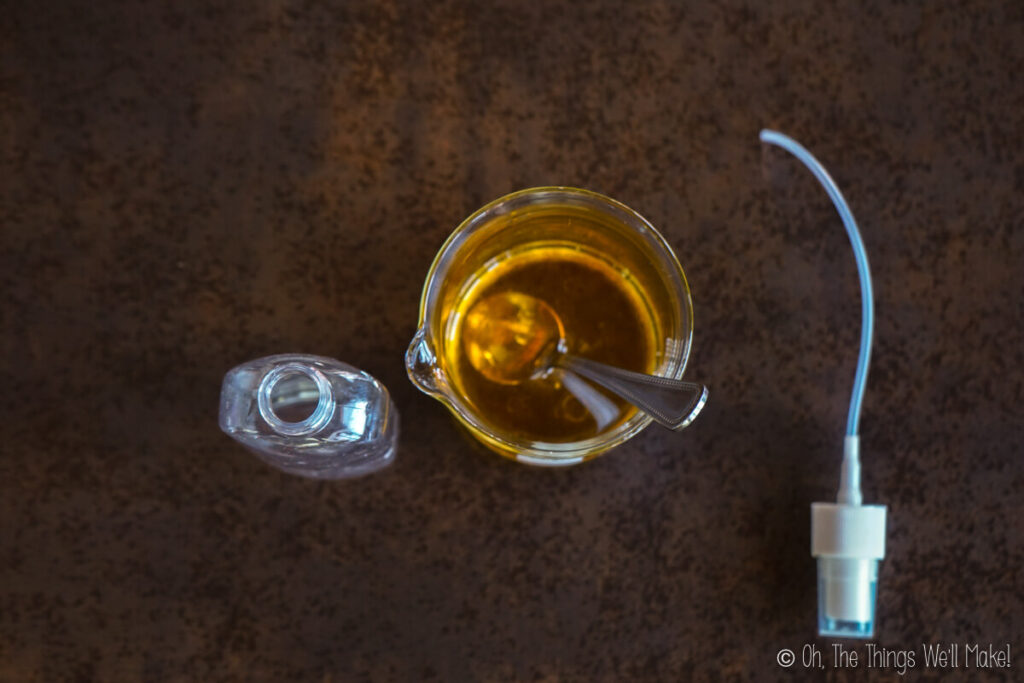
Combine the phases and bottle the spray!
How to use this bi-phase sea salt spray
Because this is a bi-phase product, you’ll want to shake it to mix it up before spraying it on your hair.
Spray sparingly all over your hair, scrunching your hair as you apply it to help define your waves and add more texture. Because salt helps keep emulsions from forming, the salt will help separate the two phases very quickly. You’ll want to periodically shake the product to mix it as you continue to apply it to your hair.
Video
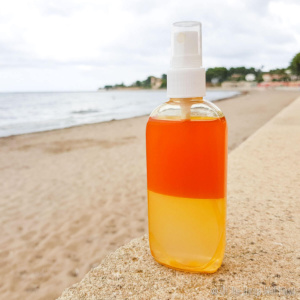
DIY Sea Salt Spray
Materials
Water phase
- 30 grams distilled water or a hydrosol of your choice
- 10 grams aloe juice or more water
- 10 grams sea salt can also use another salt like Himalayan salt
- 5 grams epsom salt (magnesium sulfate)
- 3 grams glycerin or a glycerine based extract
- 2 grams d-panthenol provitamin B5
- 1 grams natural preservative I used Sharomix
Oil phase
- 15 grams buriti oil
- 10 grams argan oil
- 7 grams Lexfeel Natural natural silicone alternative
- 5 grams broccoli seed oil natural silicone alternative
- 1 grams vitamin E antioxidant
- 1 grams essential oils (optional, for fragrance)
Optional- for pH adjustment, if needed
- lactic acid (optional, to lower the pH, if needed for your preservative.)
Instructions
- Mix together the water phase ingredients (the first 7 ingredients) until the salts are well dissolved.
- Mix together the next 6 ingredients (the oil phase ingredients).
- Combine both phases and pour into a spray bottle.
To use the spray
- Shake the bottle to combine both phases before using.
- Spray over your hair and scrunch the hair to add texture.
Notes
Customize the recipe
The water phase can use only distilled water or can add other beneficial ingredients like aloe juice and/ or hydrosols. If not using one of the ingredients of the water phase (such as d-panthenol or aloe juice), just substitute them for more water. The oils can also be substituted for other oils of your choice. As with the water phase, if you decide against using one of the ingredients of the oil phase (such as Lexfeel Natural), just substitute them for more oil. You can adjust the ratio of oil phase ingredients to water ingredients depending on your hair. If you have oilier hair, you may want to decrease the oil phase and increase the water phase.Essential oils
The essential oil(s) are added to impart a nice fragrance to the spray. If using phototoxic oils (like bergamot or other citrus oils), take care not to apply the oils to the skin when going out into the sun.Preservative
I used Sharomix 705 in this product. While the salt will help preserve the product, it’s best to use a broad-spectrum preservative to help ensure a safe product that will keep microbe-free. Use whichever preservative you have on hand. (For more information about preservatives, read my beginner’s guide to natural preservatives.)Adjusting the pH
Depending on the preservative you are using, you may need to adjust the pH of this product to bring it into a range in which the preservative is effective. (It’s also a good idea to have hair products in a range of somewhere between 4.5-5.5. You can use lactic acid or citric acid to adjust the pH down, if necessary. (To test the pH, shake the product and quickly use a test strip to check the pH.)This post was originally published on August 23, 2018. I t was rewritten, adding more customization details and video in July 2021.
 Español
Español
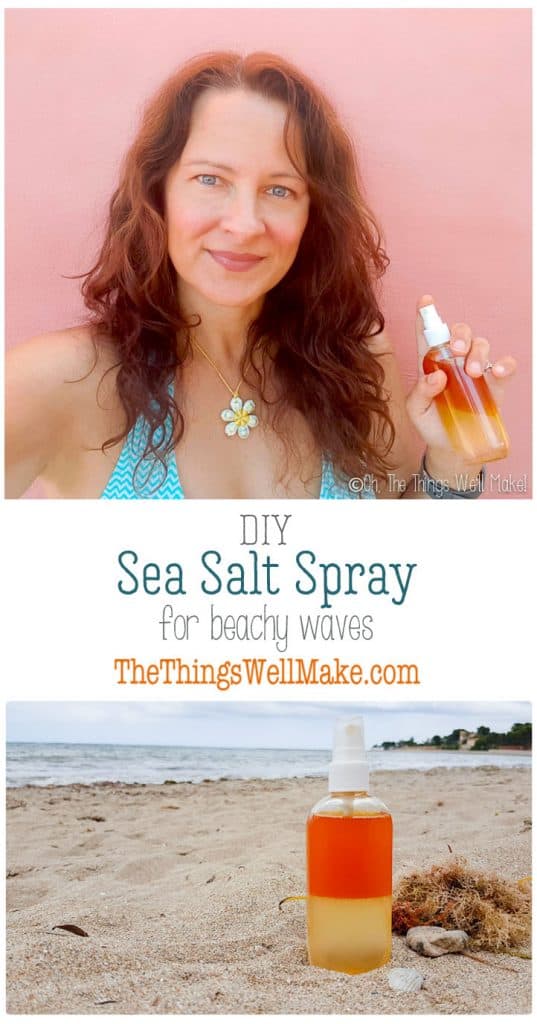
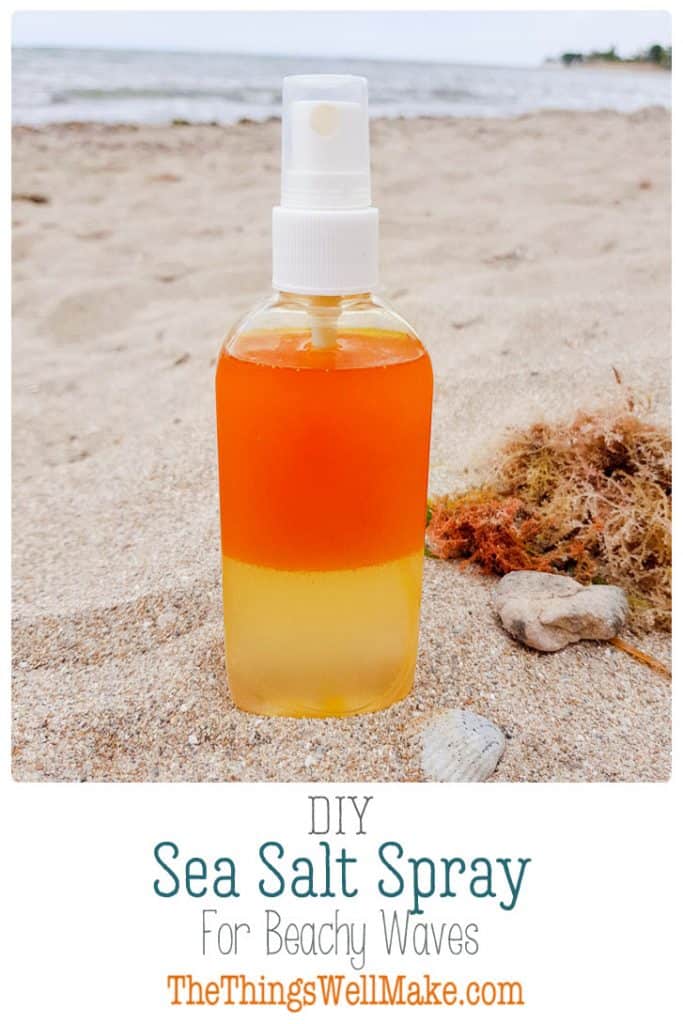
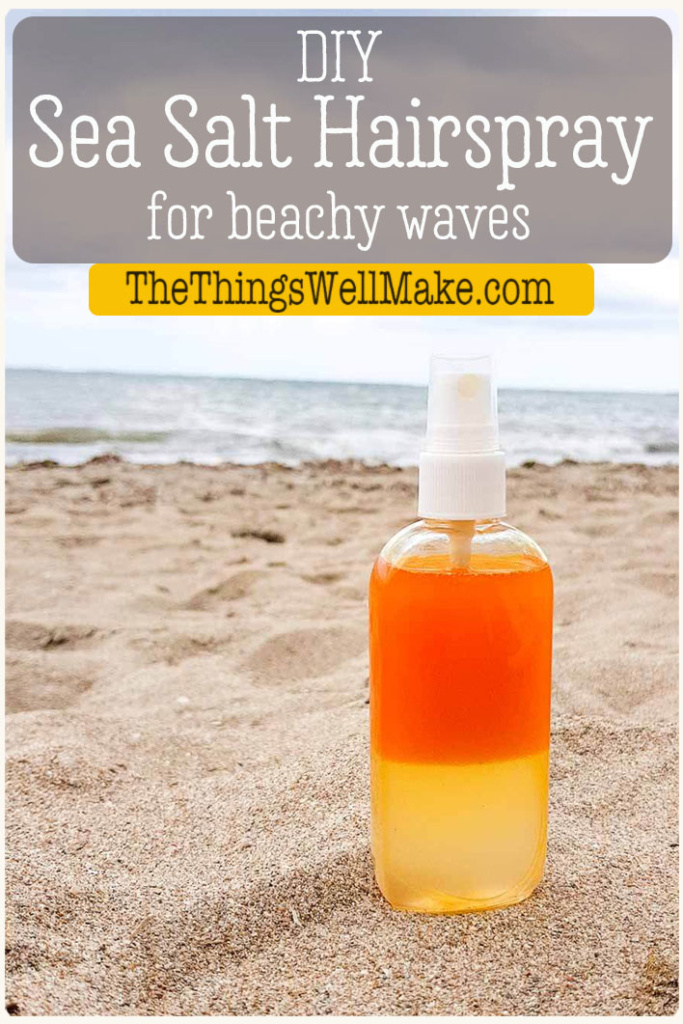
 Paleo Chocolate Avocado Pudding Pops
Paleo Chocolate Avocado Pudding Pops
Kim Stephanie
I’m in the US and don’t understand your measurements. Can you translate to US
measurements? Thank you!
Tracy Ariza, DDS
Hi Kim,
Most scales will allow you to switch from ounces to grams, but if you look under ingredients, you can click on “convert units” to switch it to ounces if you prefer.
Brett Drouin
Hey! I was wondering if at all possible we could add polsysorbate 80 or red castor Turkey oil to this as an emulsifier to mix the oils and water so a customer could shake it less?
Tracy Ariza, DDS
Hi Brett,
While it might be possible, I’m not sure how well that would work.
As is, the solubilizers only allow for solubilizing small amounts of oil into water.
In the salt spray, though, salt actually contributes to a very fast separation. I’m guessing that the salt would prevent those from working well to solubilize the oils.
Jen Hunt-Dickson
Thank you! I’ll play around with those. 🙂
Jen Hunt-Dickson
I can’t seem to find Lexfeel or Sharomix where I live (in Minnesota), or online for that matter. Would it be ok use all broccoli oil instead? Could I use Leucidal in place of Sharomix or is there something else you’d recommend? I’d like to stay ECO-CERT if possible. Also, if you have any leads as to where I can purchase those things that would be appreciated!
Tracy Ariza
Hi Jen,
You can definitely try the broccoli oil instead. It’s another silicone replacement, so…
You can use whatever preservative you like. I’m actually working on a post about natural preservatives. There are quite a few that can work…
Cosgard/Geogard, Rokonsal, Eukyl k903, Preservative ECO, etc.
Yes, Laucidal is an option. I haven’t been using it as much lately- partly because you need to use it at much higher percentages (3-4% vs. normally 1%), partly because I’ve heard it sometimes fails, and partly because there is some doubt about how it really works.
I’m in Spain, so the places I buy are a bit different. We have a list of some suppliers up in the FB group for different countries. I’m not sure about the best ones, though as I really only have experience with local suppliers.